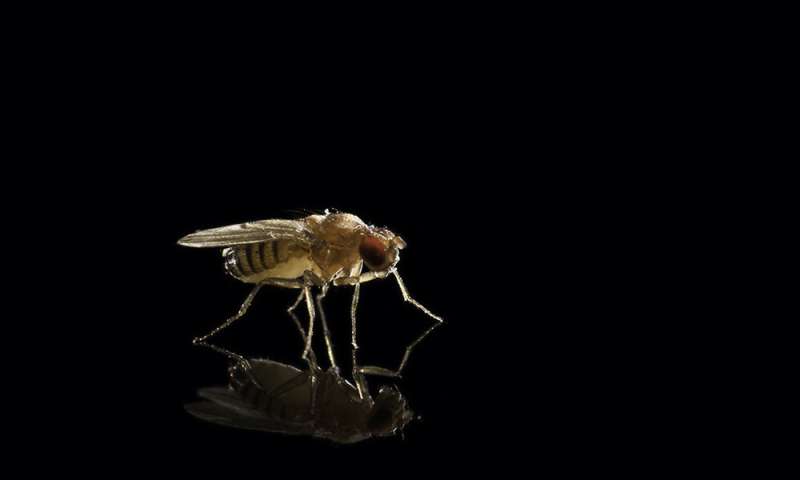More evidence of an evolutionary 'arms race' between genes and selfish genetic elements

The human genome is littered with selfish genetic elements, which do not seem to benefit their hosts, but instead seek only to propagate themselves.
These "parasites of the genome" can wreak havoc at the cellular level by distorting sex ratios or causing harmful mutations, and can even lead to a species' extinction. But, as researchers at the University of Rochester report, species evolve mechanisms to fight back.
In a new paper published in Nature Ecology and Evolution, Daven Presgraves, a University Dean's Professor in the Department of Biology at the University of Rochester, and Christina Muirhead, a computational biologist and population geneticist in Presgraves' lab and the first author on the paper, present further evidence of an evolutionary arms race within organisms—and the mechanisms at play in this arms race—to combat selfish genetic elements.
"We have found that an evolutionary arms race has led to a proliferation of meiotic drive genes on the X chromosome and suppressor genes elsewhere in the genome," Muirhead says.
Drosophila is fruitful and multiplies—which is ideal for studying genetics
The researchers studied the genomes of three closely related species of Drosophila (fruit flies). Fruit flies share about 70 percent of the same genes that cause human diseases and are similar to humans on the molecular level. Because fruit flies have such short reproductive cycles—less than two weeks—scientists can create generations of the flies in a short time. These key characteristics make the insects ideal models for learning more about human genetics.
The researchers discovered that each of the species of fruit flies they studied has 5 to 12 meiotic drive genes on the X chromosomes. The meiotic drive genes—a type of selfish genetic element—cheat by getting into more than the typical 50 percent of offspring in the next generation. This allows the genes themselves to spread rapidly through a population.
The meiotic drive genes that the researchers studied are related to a meiotic drive gene called Dox—"distorter on the X"—which is found on the X chromosome and kills Y chromosome-bearing sperm. The researchers called their newly discovered genes 'Dox-like,' or 'Dxl' for short. The Dxl genes produce a protein called a histone that disrupts normal DNA packaging in Y-bearing spermatids—immature male sex cells—leading to sperm death. Killing Y-bearing sperm means that subsequent generations will have mostly daughters and few sons.
The Dxl genes work only to propagate themselves, however, and don't "realize" that this may lead them on a path that could eventually take their host species—and themselves—to extinction.
"The drive genes get an evolutionary advantage by killing Y-bearing sperm," Presgraves says. "But the individuals carrying the drive genes suffer reduced fertility, and the population becomes increasingly female-biased, risking eventual extinction."
Duplicate Dxl genes play defense
Dxl genes skew sex ratios to increase the rate at which they get passed on, but the researchers uncovered another surprising dynamic. The species of Drosophila they studied have evolved a defense against the selfish genetic elements. This defense comes in the form of genes that are duplicates of the Dxl genes, but with an important modification. Much like the mythical Trojan Horse, the duplicate genes masquerade as Dxl genes, but contain a stealthy weapon. Instead of expressing Dxl proteins, the genes express small RNAs that silence the Dxl genes via RNA interference.
The research is further evidence that microscopic evolutionary arms races are taking place within organisms: selfish genetic elements evolve to benefit themselves, and the rest of the genome evolves suppressors to quell them. The selfish genetic elements then evolve to overcome the suppressor, the suppressor has to evolve to keep pace, and so on. "Similar repetitive gene copies like the Dxl genes that selfishly bias sex ratios are common to the X and Y chromosomes of great apes and humans," Presgraves says. "These are just one line of evidence that evolutionary arms races have important consequences for genome evolution."
More information: Christina A. Muirhead et al, Satellite DNA-mediated diversification of a sex-ratio meiotic drive gene family in Drosophila, Nature Ecology & Evolution (2021). DOI: 10.1038/s41559-021-01543-8
Journal information: Nature Ecology & Evolution
Provided by University of Rochester


















